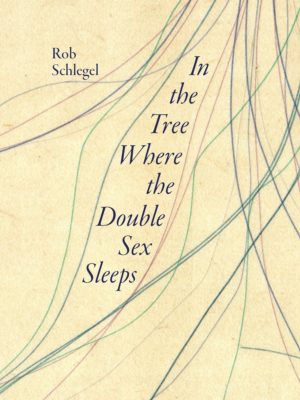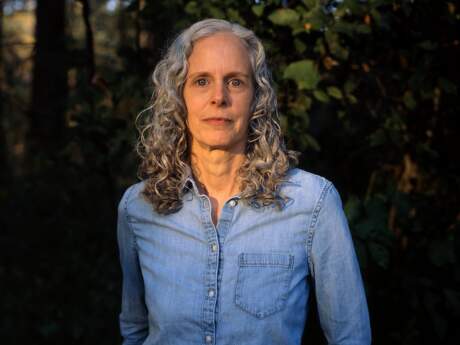In Their Own Words
Rob Schlegel on “52 Trees”

52 Trees
for John Ashbery
And what is it that brought you here, if not the spell the cedar cast
beneath which, deer bed on the boughs
of the Pacific silver fir? The fire willow's new stems
resemble velvet. Addicted to starlings
the sumac shines. Seeds of pitch pine
dream in alder, while cape holly makes excellent cover
for jays building nests out of chinkapin twigs.
And the bitter orange shineth, albeit dimly, as though at dusk.
From silver poplar, Donatella sculpted Magdalene.
What does she smell like if not the flowering pear? A saguaro
fulfills an image, but the image is invisible
like salmon climbing sitka. The lemon's perfume
mingles with myrtle in bloom. Living beyond its light,
ginkgo is granted more. The Monterey cypress
is relieved of the burden of fashioning its own form.
Caterpillars populate the hardy catalpa
as the mayten commits to memory the interior dimensions
of the common box. The fig exceeds itself.
A limber pine is in Montana, growing. The olive
waits for it. Jasmine sharpens the hazel's
irregular teeth. The Japanese snowbell sleeps.
But the knockaway's range is limited, and lodgepole pine
is prolific to a fault. The paper birch
examines itself. Branch by branch, ravens dismantle
the Mount Atlas pistachio while an apricot
accuses the hornbeam of murder. Demonstrating poor judgment,
quince touch the crown. Needles
of the ponderosa, pierce low clouds.
When Thisbe's splashed blood stains fruit of the mulberry,
gray willows become wooly. Lilacs
self-medicate. Twin poplars respond separately
to the same storm. The redwood churns, a towering shrug.
Sycamores go insane. The juniper sways so hard
its roots expand like veins. Ariel howls inside
the live oak. The Pacific yew is so afraid
it grows into a hoop. Taking cues from the copper beech,
chestnuts brace. The grand fir falls.
Rarely, the blue paloverde acts like a tree.
The linden is a piece of paper. A paper bird. It is
a woodswallow. In spite of everything
it sings for you. According to the common ash
a person shall be called many things.
Eucalyptus mourn the plum that never released its leaves.
On "52 Trees"
The morning of March 20th, 2018 I woke up with the words "52 Trees" buzzing in my head. It felt like the title to a poem that was already growing somewhere inside me. But who planted the seed? Was it my recently deceased grandmother in whose house I was living? In the seventy years she lived in it the house held her through the death of her husband and two children.
Or maybe the seed was planted by my beloved aunt, who often spoke to me in my dreams after a neurological illness robbed her of her speech.
Or maybe it was the young ghost of John Ashbery.
That morning I wrote down the names of every tree I knew by heart. I began with the trees that surrounded my childhood home, then moved outward, recording the names of trees that grew in the five states where I've lived. Oregon. California. Washington. Montana. Iowa. For research, I lovingly annotated Daniel Mathews' twin references Pacific Northwest Natural History, and Rocky Mountain Natural History. But these geographic limits soon felt arbitrary. Why not include trees from states and countries I've never visited? Freed from previous constraints, the poem swelled. At one point it contained as many as one-hundred and twenty trees. There were so many! Too many. I realized I couldn't imagine my way into the life of each tree with the depth of attention it deserved. The trees that felt this the most simply stepped away, like friends you forget how to see.
While the poem absorbed language adapted from Lucy Ives's Impossible Views of the World, Denis Johnson's The Largesse of the Sea Maiden, and Shakespeare's The Tempest, it found its temporal and spiritual source in Ashbery's "Into the Dusk-Charged Air," whose formal constraints simultaneously reinforce and transcend the ongoingness of life's most turbulent forces.



